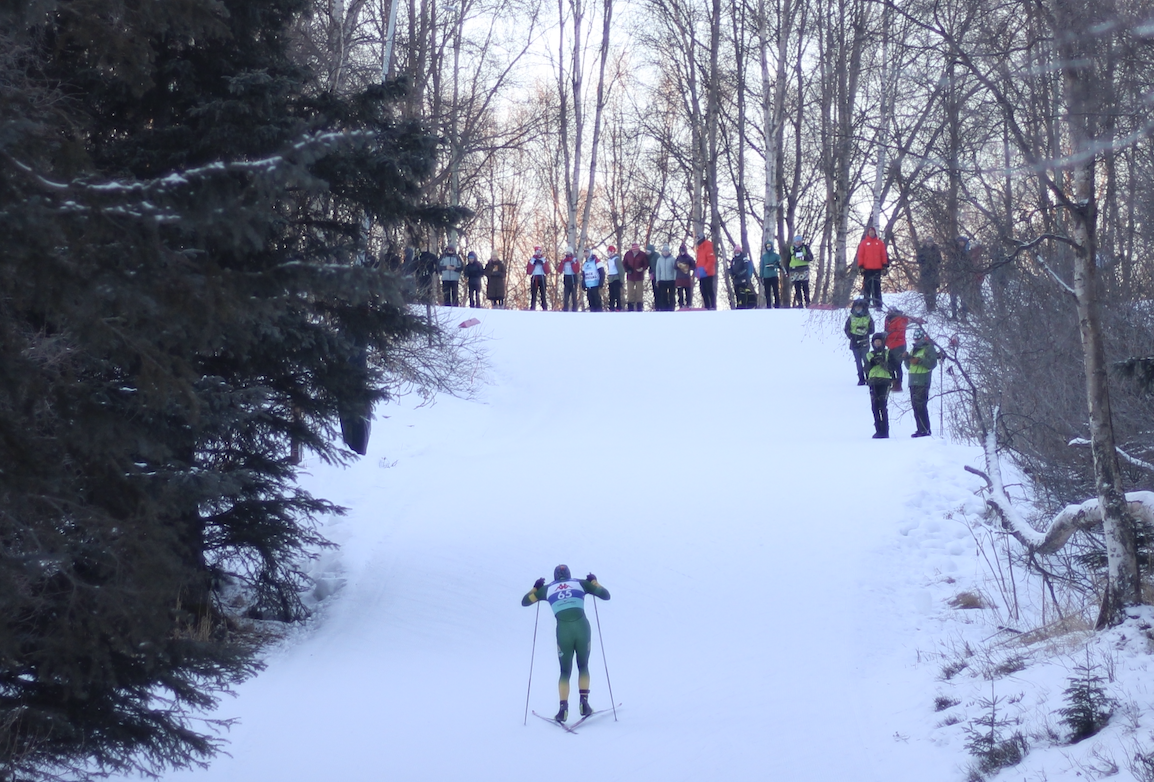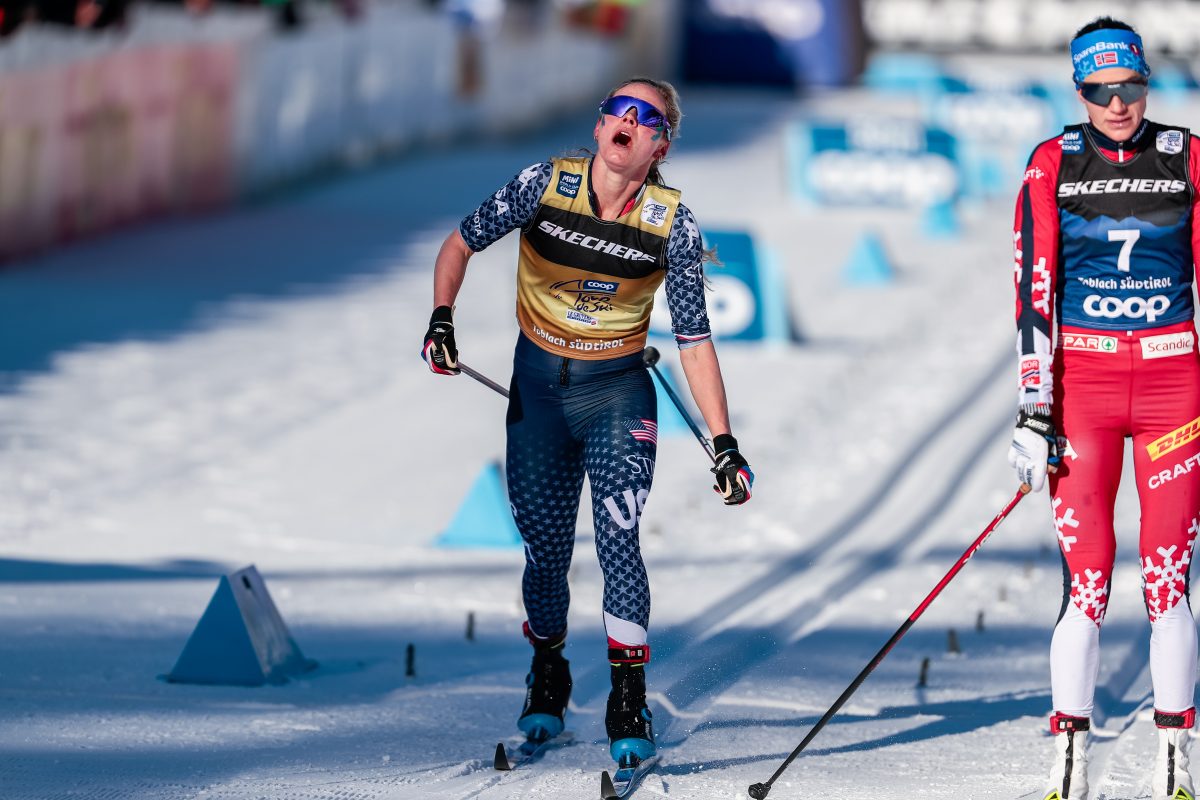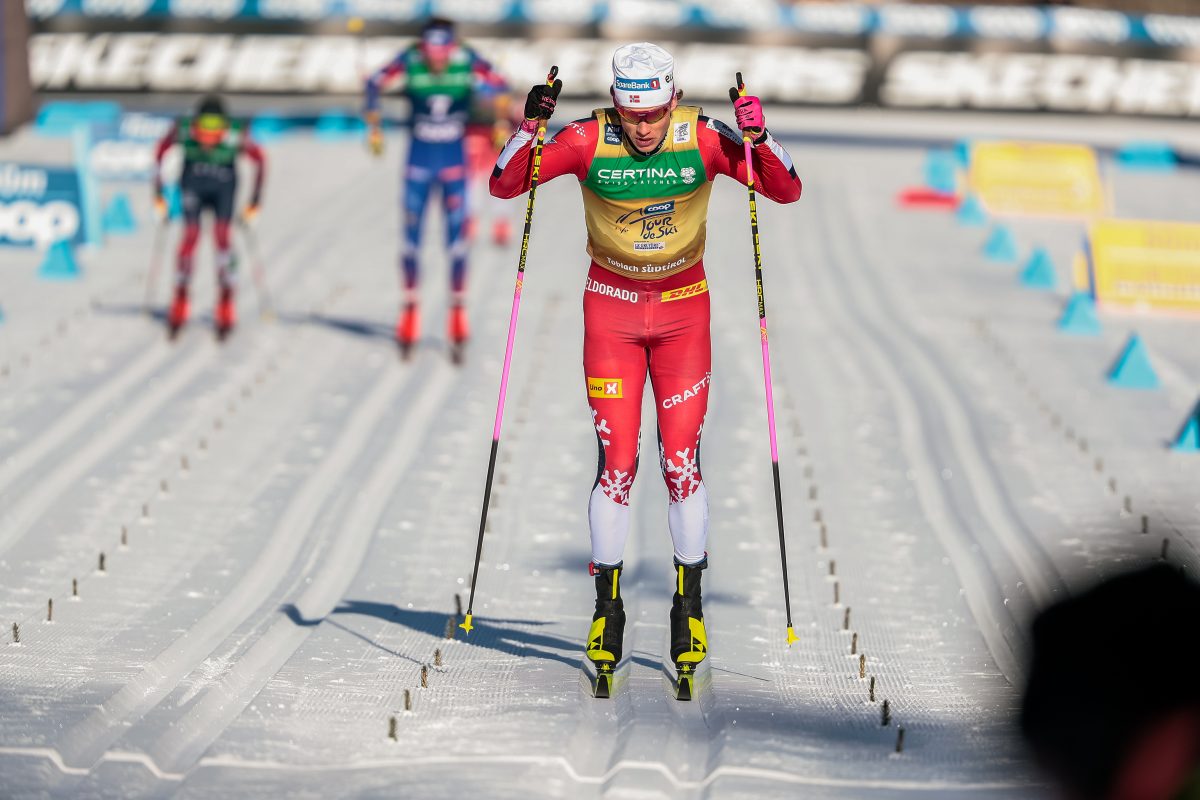This coverage is made possible through the generous support of Marty and Kathy Hall and A Hall Mar k of Excellence Award. To learn more about A Hall Mark of Excellence Award, or to learn how you can support FasterSkier’s coverage, please contact info@fasterskier.com.
k of Excellence Award. To learn more about A Hall Mark of Excellence Award, or to learn how you can support FasterSkier’s coverage, please contact info@fasterskier.com.
Stage Three of the Tour de Ski, the penultimate day of racing in Toblach, and the final World Cup event of 2024: the Women’s 20 k Interval Start Skate race. Playing out on a unique, long-course format, the course essentially entailed ten kilometers of gradual climbing to the head of the valley, followed by a ten-kilometer net descent on the return to the starting area.
For the viewer at home, two questions predominated as the skiers took their places.
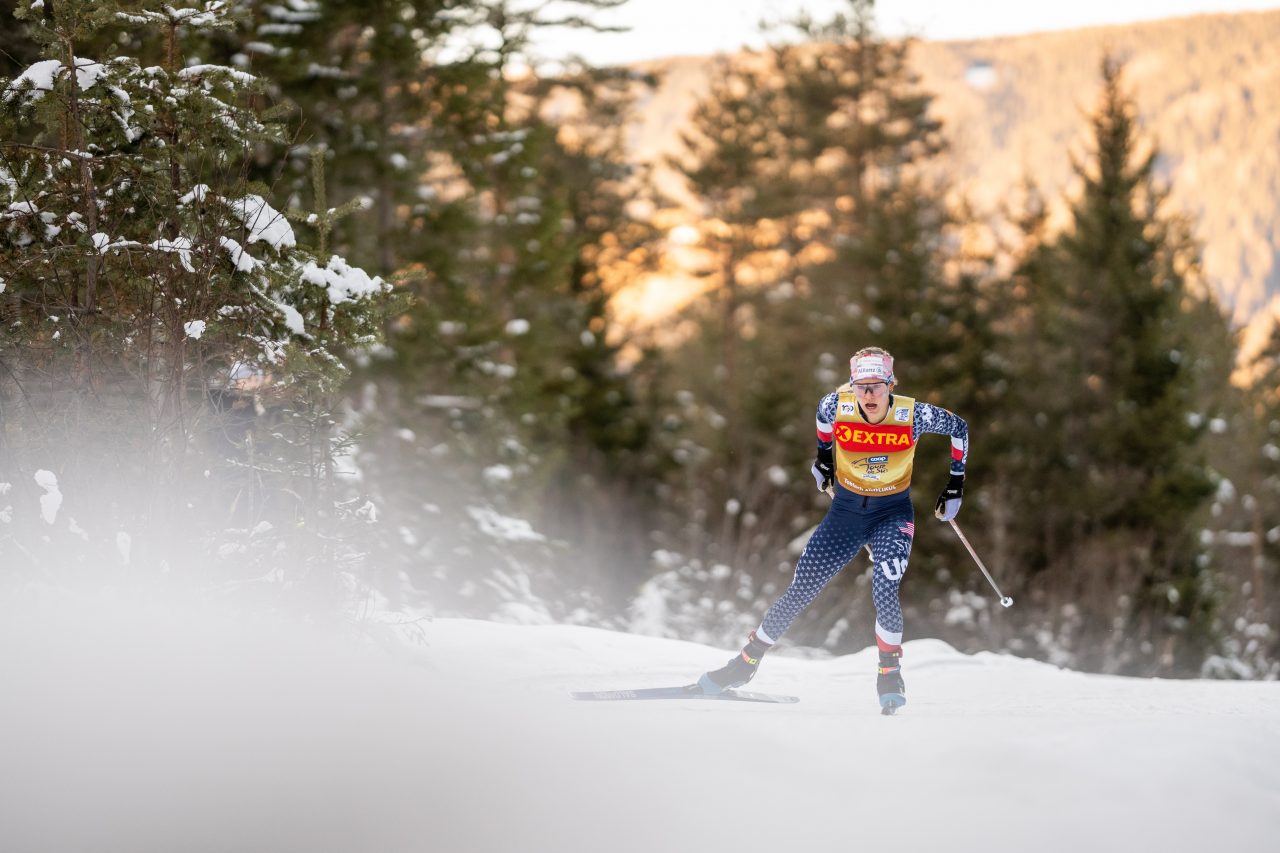
First: Could Jessie Diggins make it a hat trick? Momentum was certainly in her favor. On Saturday, she opened the 19th Tour with a surging win in the Skate Sprint; on Sunday, she followed up by winning the 15 k Classic Mass-Start, her first victory in that discipline in fourteen years of World Cup racing. With a 38-second lead over Kerttu Niskanen (FIN), and 1:09 over both Astrid Øyre Slind (NOR) and two-time Tour de Ski Champion Heidi Weng (NOR), there at least seemed little chance that Diggins would end the day wearing anything other than the leader’s bib. And, second: Would this be Therese Johaug’s chance to make her mark in Toblach? After a triumphant comeback in Lillehammer, the three-time Tour Champion failed to qualify in Saturday’s sprints (as, admittedly, might be expected) and was sixth in Sunday’s 15 k Classic. However, the longer distance, Skate discipline, and interval start would appear to favor Johaug; after all, she secured the gold medal in the 2022 Olympic 30 k Skate by a margin of 1:43.3, effectively rendering the Mass Start a personal time-trial.
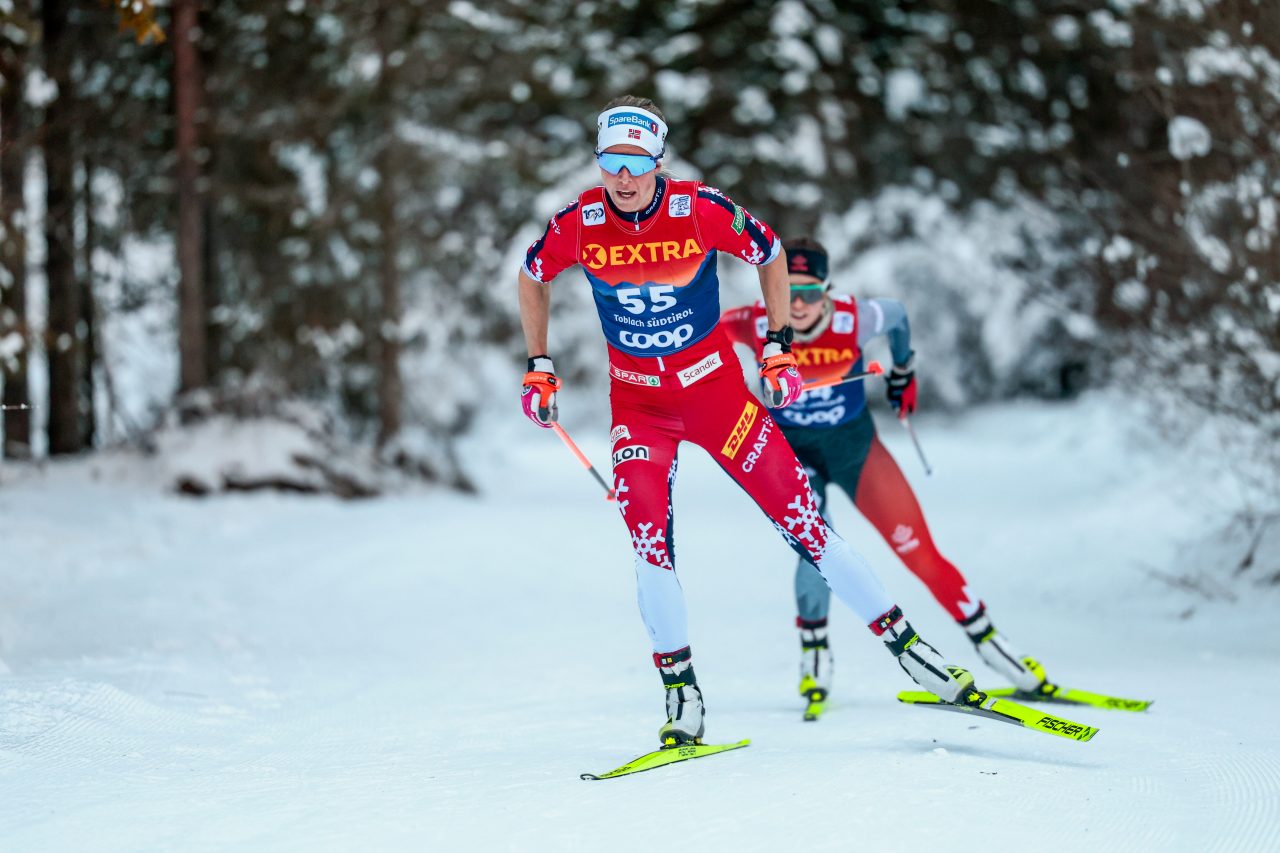
However, for the conscientious commentator, the race posed another question entirely: When was the last 20 k Interval Start Skate? Astrid Øyre Slind won the 20 k Interval Start Classic two weeks ago in Davos, ahead of Kerttu Niskanen and Johaug. At the beginning of December, Diggins won the 20 k Mass Start Skate in Ruka over Joanna Sundling (SWE) and Heidi Weng. Before that, Diggins closed out the 2024 season with a win in another 20 k Mass Start Skate in Falun, and Finland’s Krista Parmakoski won the 20 k Interval Start Classic on home soil at the beginning of March. Beyond Spring of 2024, the FIS Results page testifies to a clutter of interval Classics and mass-start Skates until Davos, December 18, 2022: the most recent 20 k Interval Start Skate. There, Jessie Diggins carried the day by 5.5 seconds over Ingrid Flugstad Oestberg (NOR); Rosie Brennan finished third. However, notably absent from that Davos race were Heidi Weng and, due to her retirement, Therese Johaug. How would this trio fare in a long-awaited, perfect storm?
Interviewed just before the broadcast by FIS, Petter Northug (formerly NOR) estimated that finding “the right speed on the first two kilometers” would be “the key” to the race. U.S. broadcaster Kikkan Randall (formerly USA) concurred, stating that building speed—without burning out too quickly—would be essential in the first five kilometers. With Tour de Ski Sprint Points available at the first-time check (just over two kilometers in) and Climbing Points available at the ten-kilometer mark, there would certainly be an incentive to get out fast. But, alone in the woods, would points-chasers be able to maintain early leads?
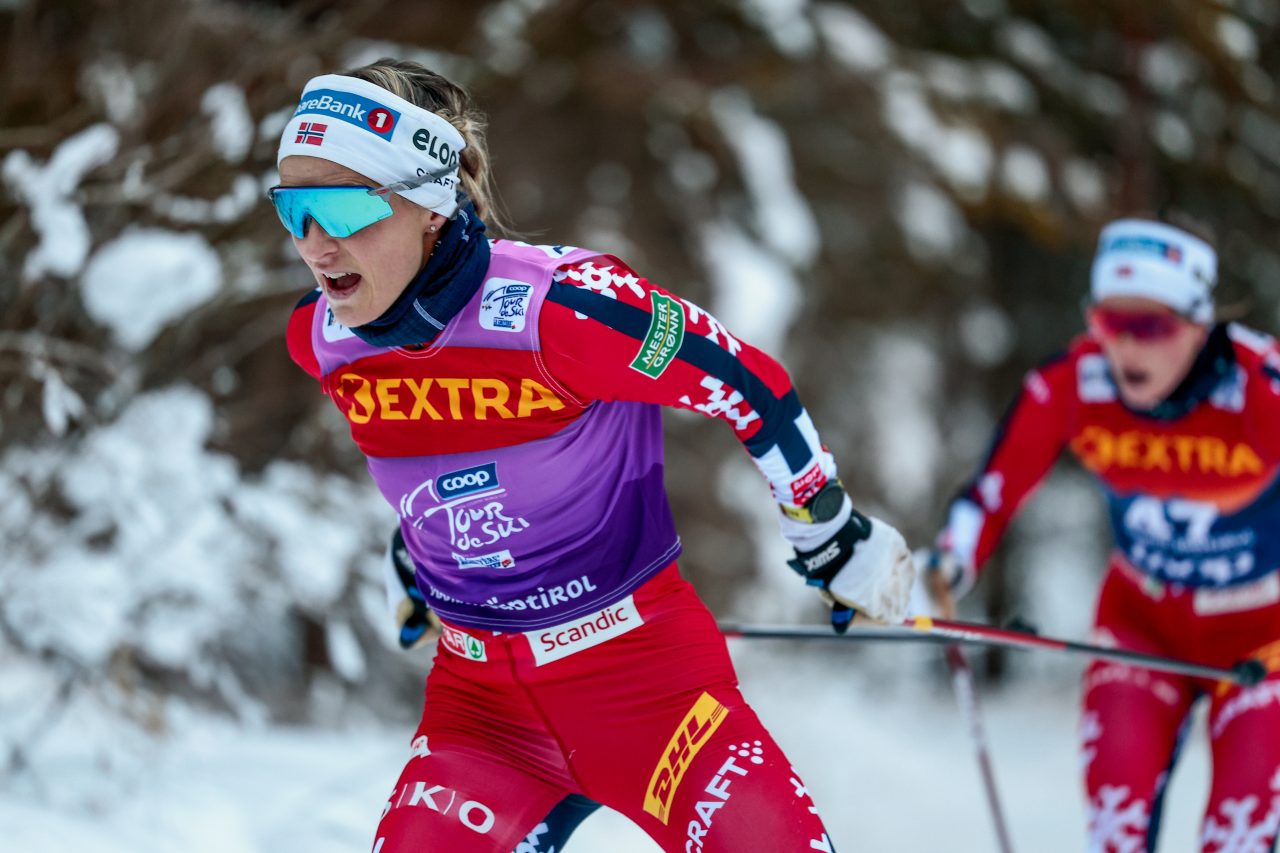
Carl Sets the Pace; Johaug Surges at the Crest
At the first time check, Victoria Carl (GER; bib 29) seized an early lead, passing the 2.1 k mark in 5:23.4; Kerttu Niskanen (bib 39) came through 9.7 seconds back, followed by Johaug (bib 49) and Diggins (bib 57), both 10 seconds back and in a provisional third place. Slind (bib 55) was hot on their heels, 10.4 seconds off of Carl.
At the 5.6 k time check, Carl had maintained her roaring pace, crossing in 14:14.1. Niskanen shrunk the gap to 4.3 seconds, while Heidi Weng (bib 35; the first of the returning Tour de Ski Champions to take the course) followed 19.1 seconds back. Johaug shaved her gap to 5.0 seconds but, initially, did not appear to be in the dominant form of distance races past, showing some signs of exertion. Slind kept her gap against Carl from opening, following in 10.1 seconds; Diggins, having caught teammate Julia Kern (bib 56), fell to a provisional fifth place, 12.7 seconds back.
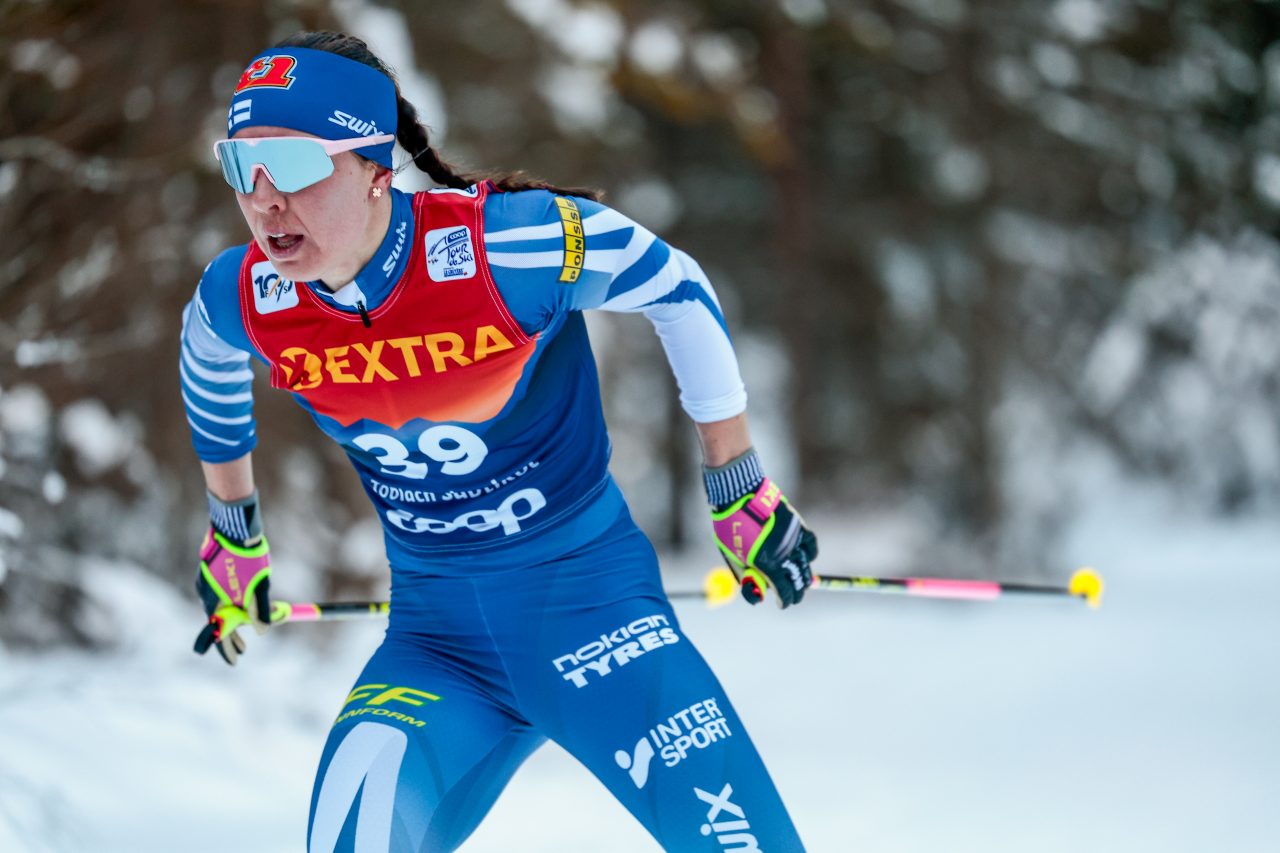
At the top of the course, Carl showed no signs of flagging, leading Helene Marie Fosseholm (NOR; bib 13), who set the early lead times for the course by over 32 seconds at the 10.6 k mark; Weng followed, slipping to 23.3 seconds back. But even if Carl were holding strong, others were hitting their stride: Niskanen was the first to turn the lamp green, leading Carl by 3.8 seconds; then, contrary to first impressions, it was Johaug, nudging herself ahead of Niskanen by 0.7 seconds.
At the 10.6 k mark, the provisional standings were Johaug (30.01.1) in first; Niskanen (30.01.8) in second; Carl (30.05.6) in third; and Slind in fourth (30:17.4). Diggins had fallen to sixth place and 29.6 seconds back, looking visibly exhausted as she reached the course’s high point.
Johaug Storms the Descent; Slind Attacks from Traffic
Descending to the 15.6 k time check, Carl faded to fourth place: it was Johaug, clawing her way into a 6.4 second over Niskanen, who seized the lead. Slind sat in third, 9.1 seconds behind Johaug. Diggins was in fifth, 32.3 seconds behind, with Julia Kern trading pulls with her golden-bibbed teammate.
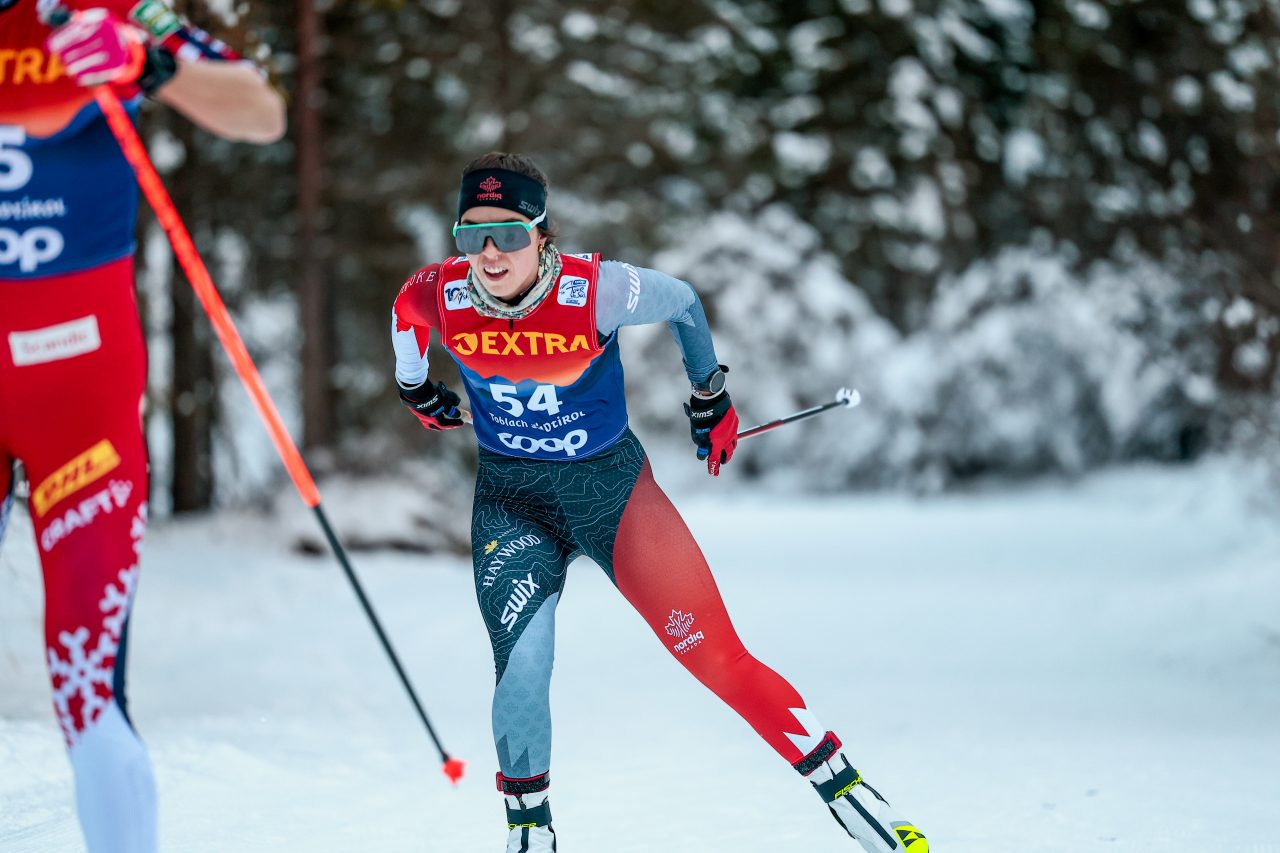
At the line, Carl had her turn in the Winner’s Chair, until the arrival of Kerttu Niskanen, who put 7.5 seconds on the German. The day briefly appeared to belong to Therese Johaug, who led Niskanen by 17 seconds and Carl by 24.5. However, entering the stadium in a thicket of Swedes, it was Astrid Øyre Slind who made the decisive move of the afternoon and seized victory from the clutches of the once and future Queen of Snow—taking first by 3.3 seconds over Johaug. Carl, despite her valiant lead, would again be denied a podium finish, slipping to fourth place. She was tied in that position with Katherine Stewart-Jones (CAN), who secured a career-best fourth place, 27.8 seconds off Slind.
Diggins finished in sixth, 36.3 seconds off the lead. Additional strong showings from the US Women included Sophia Laukli (10th place, + 1:01.1) and Julia Kern (13th place, + 1:08.9).
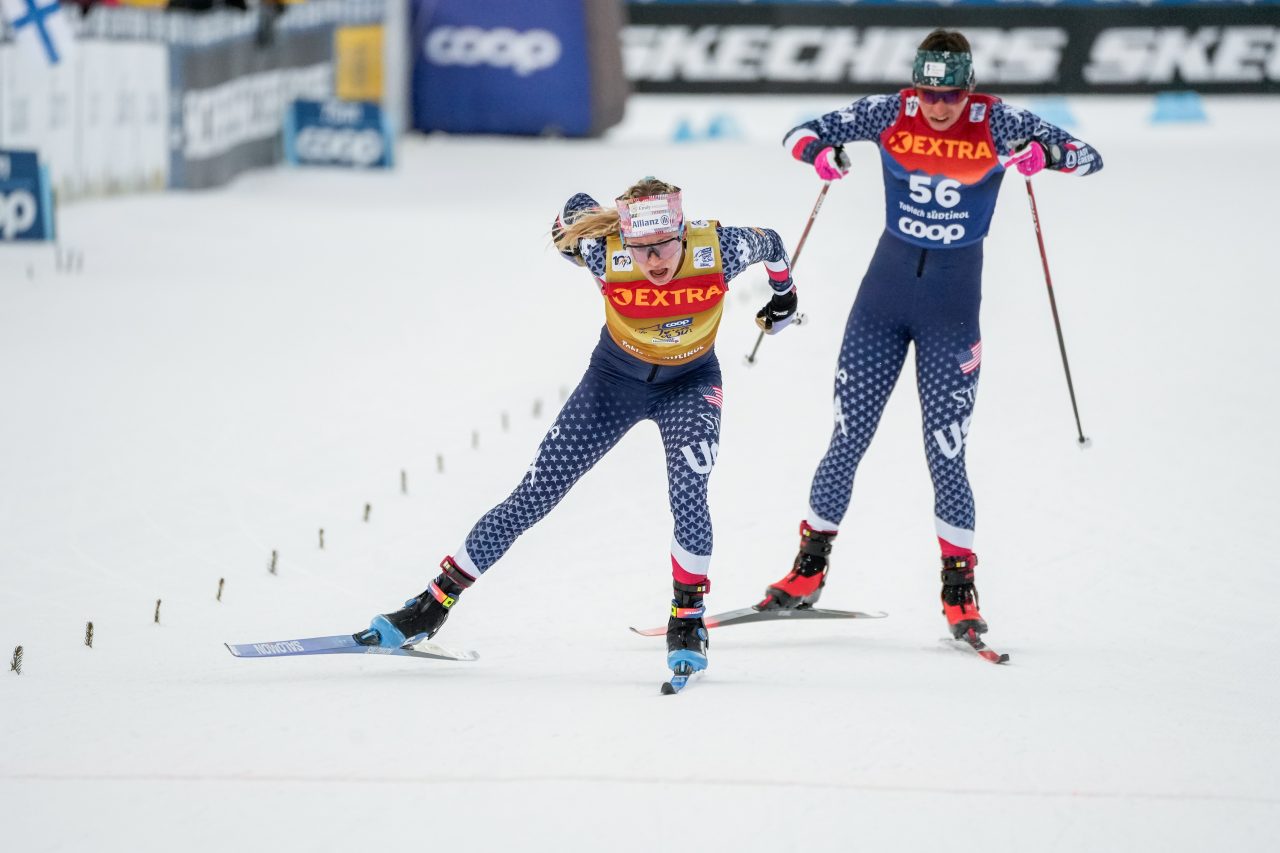
Pack Skiing Defines the Day
In any Interval Start format, athletes’ fortunes may hang on the fickleness of their starting seed—as who they start behind or ahead of will dictate their pacing fellows for the day. While a traditional, multi-lap race may enable a skier to encounter a wide variety of racers, today’s single-lap race leads to the coagulation of large, largely stable pace packs near the course’s high point.
For Diggins, the single, 20 k lap was a race format she had “never done in [her] life,” and despite being “really cool,” was also “really hard. I basically pinned it as hard as I could go and just held it there […] It was hard because it wasn’t a normal course.” With the course’s gradual gradation, there was “basically no rest out there.”
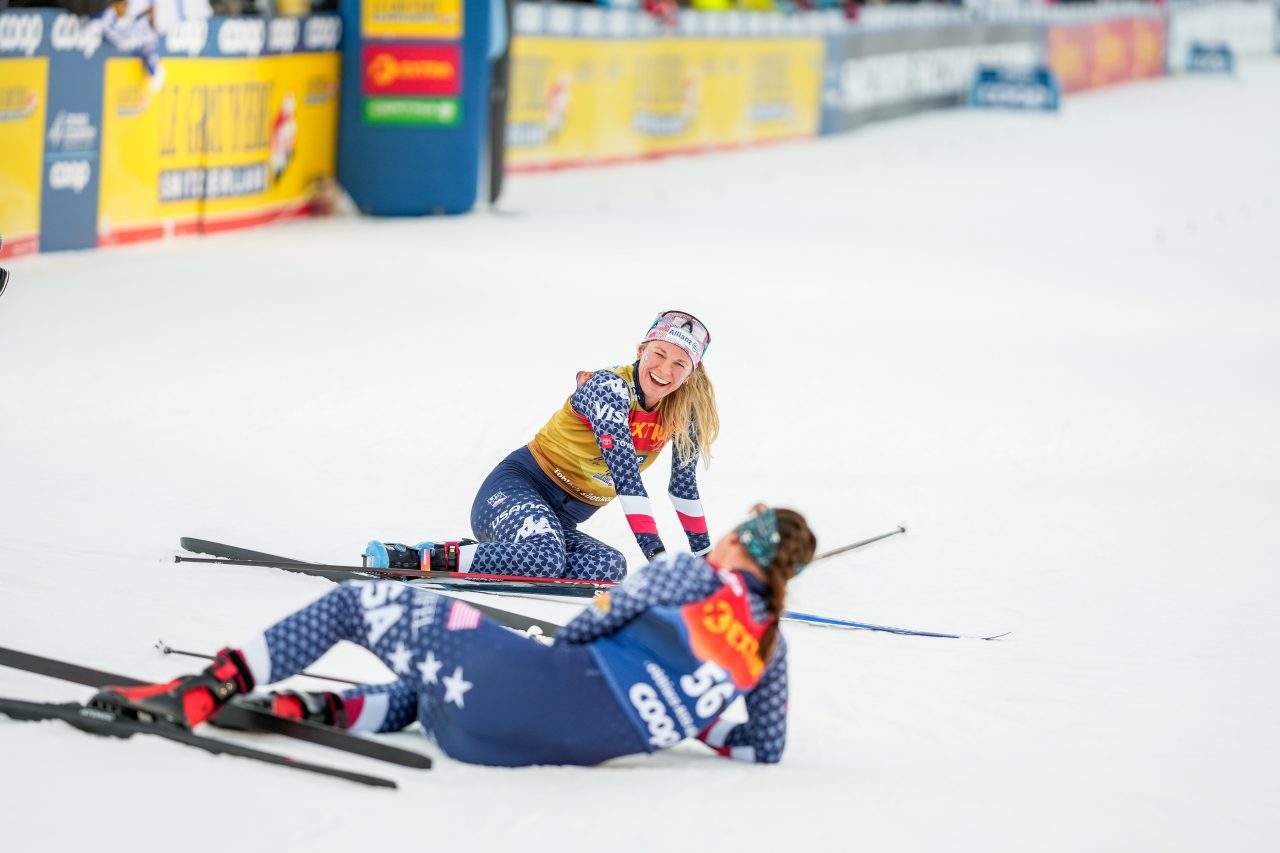
“The best part was that I got to ski with my teammate, Julia [Kern]. We’ve trained together all summer, so that was really, really awesome […] We helped each other, and it was really, really motivating.” The two had planned ahead of time to work together if Diggins caught Kern and executed accordingly, with Diggins leading to the top of the course and Kern assisting with pulls in the latter half of the course. “We had amazing communication and collaboration, and honestly, it felt like we were doing the Merino Muster in New Zealand—every couple minutes, switch[ing] leads,” and verbally cueing each other to take the lead or pull back. “Without her, it would have been a really tough time for me because you either got lucky in that you got to ski someone or you didn’t. That’s ski racing—it’s not fair; the sport is not fair, and today was a wildly unfair course in that you either saw people getting to take a train up and skiing with big packs, and that made massive differences, and then you saw people who got stuck skiing alone. So, honestly, massive kudos to the people who skied alone and had a super impressive result because that was incredibly, incredibly hard.”
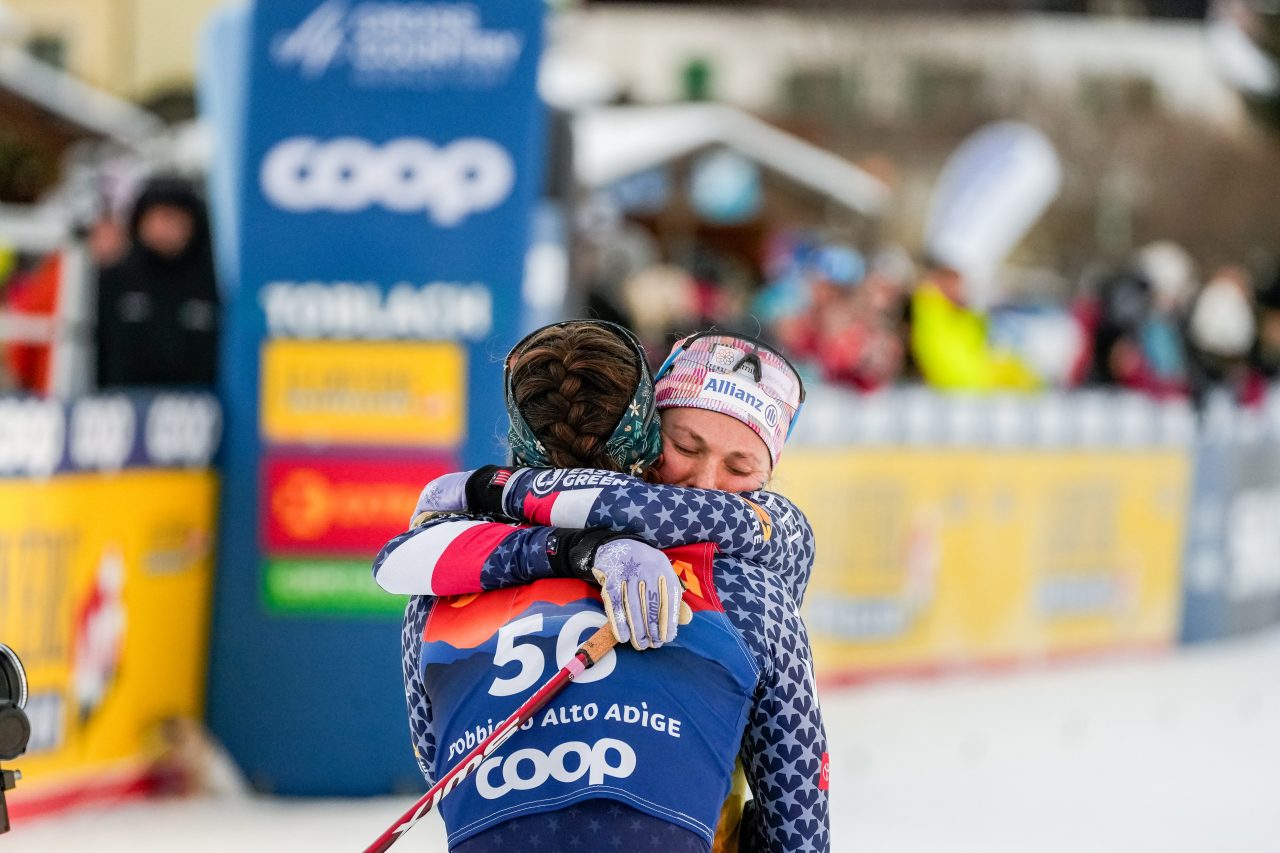
“I’m just proud of us—how we worked together, communicated, collaborated, and fought for every single inch.”
Collaborative skiing also defined the day for Laukli, in a race she described as fraught with “a lot of emotions. Right at the start, I already heard Victoria Carl catching me and thought, ‘Alright, that’s another terrible race.’ Then, I skied with her on the up, and we both realized we could make each other’s races better. I was doing a lot of work on the uphill so that she could do a lot of work on the downhill, and I think we both benefitted. I know I benefitted, at least!” While Laukli’s Classic performance on Sunday had put her in a “dark hole,” she is entering the New Year and the next stage of the Tour feeling invigorated after today’s result. “It’s a little bit shallow to let [Sunday’s] result mean so much, but I was definitely a little bit nervous on the start line, and I really want a full Tour. If I had another bad race, I don’t know how my motivation would be. I’m really happy, and I want to keep going now.”
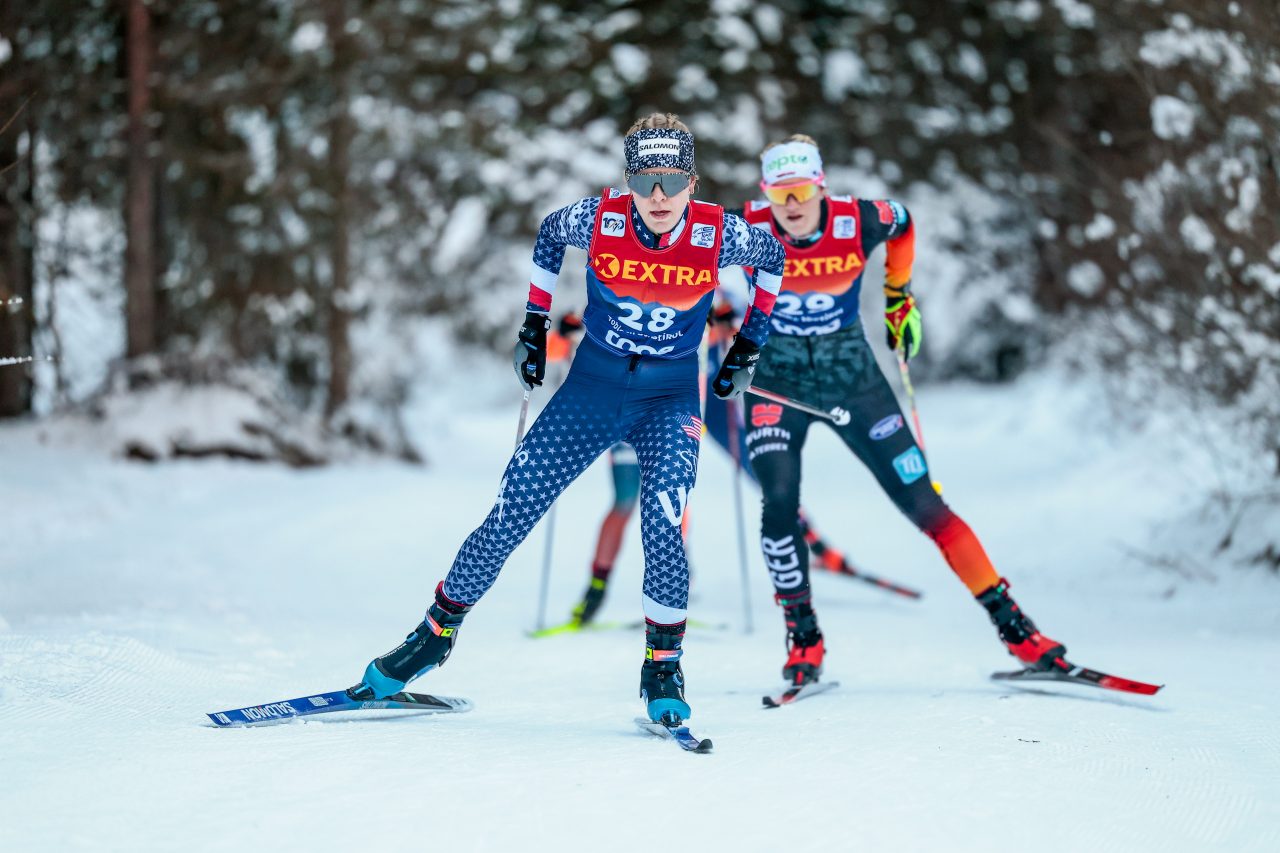
“This tour is a bit different for me because I’m trying to do a bit better in races other than just the Hill Climb because now I’ve proven to myself that I’m more than just a hill-climb skier. I’m also trying to perform well in the other races,” and she is certainly not holding back in hopes of securing another Alpe Cermis victory.
Interviewed just before mounting the podium, Slind reported that she felt “amazing” during today’s 20 k. The Ski Classics powerhouse expressed relief that she could “finally” prove her abilities in the Skate discipline, noting: “This was one of the most fun races I’ve ever done. We were racing together from the top [of the course], with really good coverage from Canada, Sweden, and Norway” in the finishing cluster. The win was a combination of factors: “A little bit lucky, a little bit smart, and a little bit good shape.”
As for Stewart-Jones’ standout result, she credited great skis, and close skiing with Slind and Moa Illar (SWE). “The strategy was to hold on to Astrid Strind,” Stewart-Jones wrote. “I knew she would be strong on this course so I knew that if I held on it could be a great race. It was awesome to be able to work with her and Moa Illar on the downhill. We gained a lot of time in those last 10 kilometers. It was just a great day where everything came together. The [Canadian] team did an amazing job with the skis which, on this course, makes a huge difference!”
The 19th Tour de Ski will continue on New Year’s Day in a Classic Pursuit, with starting positions based on today’s Interval Start race. Diggins maintains her Tour de Ski lead by roughly 19 seconds over Niskanen and 33 seconds over Slind.
View Women’s 20 k Interval Start RESULTS here.

Luke Dykowski
Luke Dykowski is an alumnus of the University of Minnesota Nordic Ski Club ‘22, and is the Founder and Nordic Coordinator of the Midwest Collegiate Ski Association. He is currently a law student at Georgetown University.

